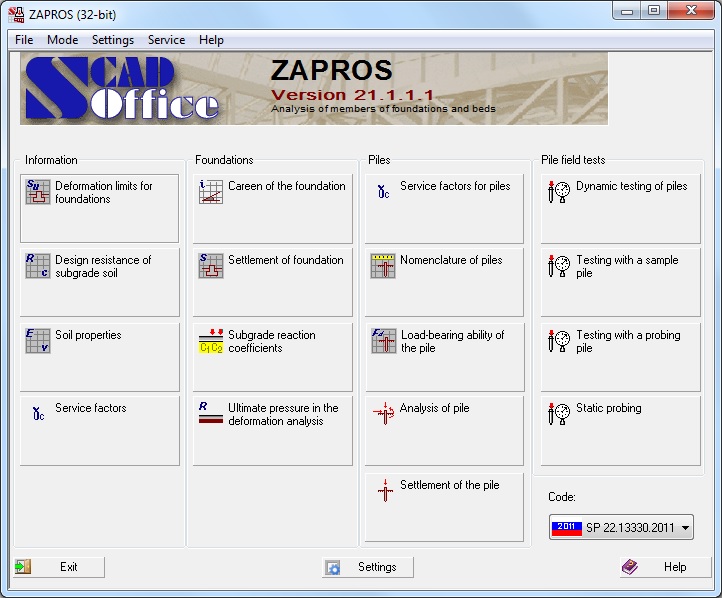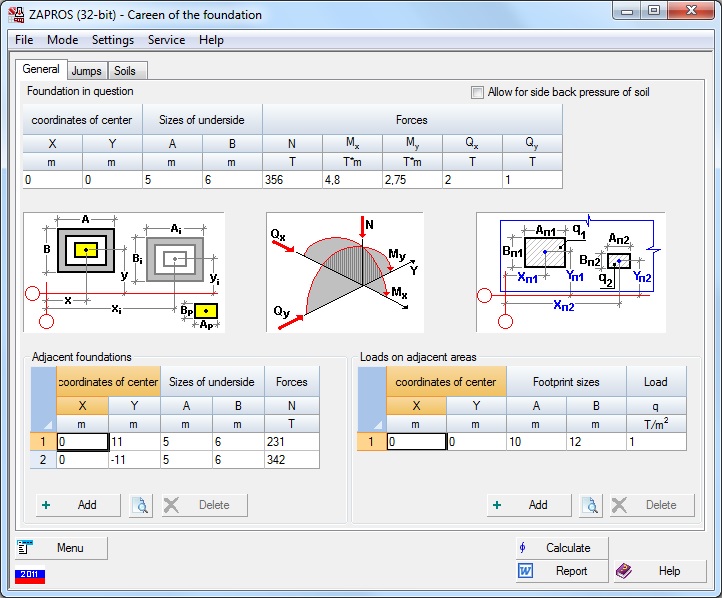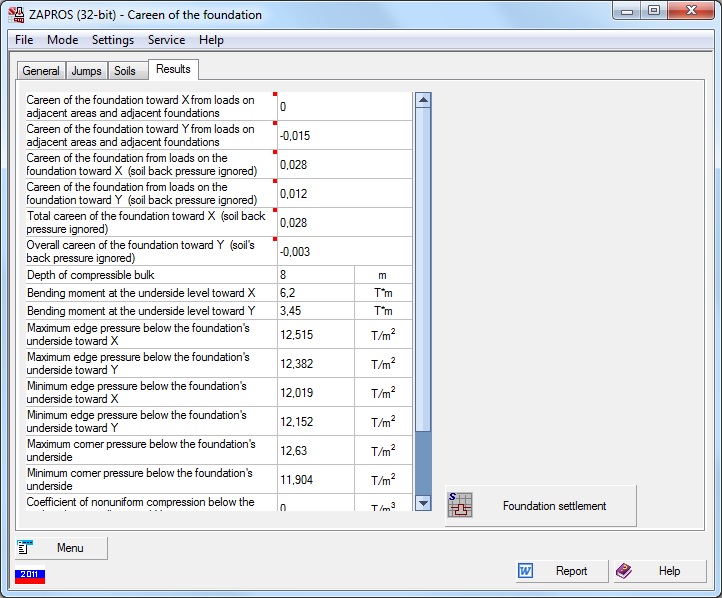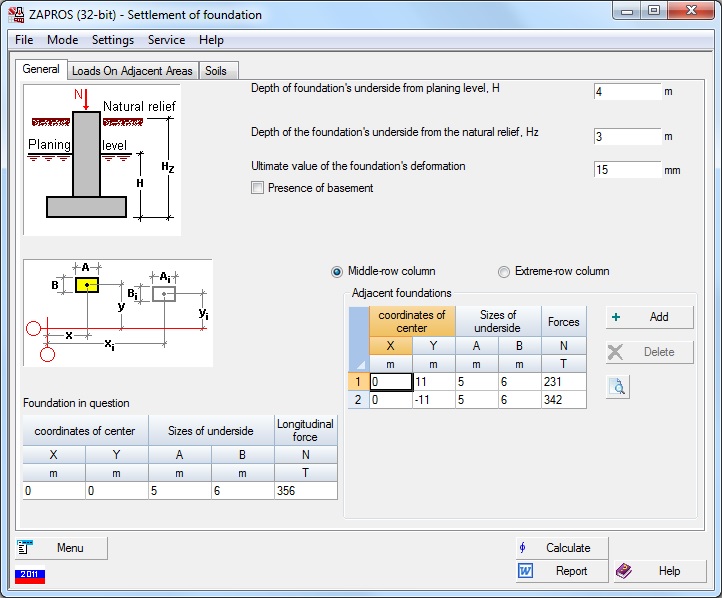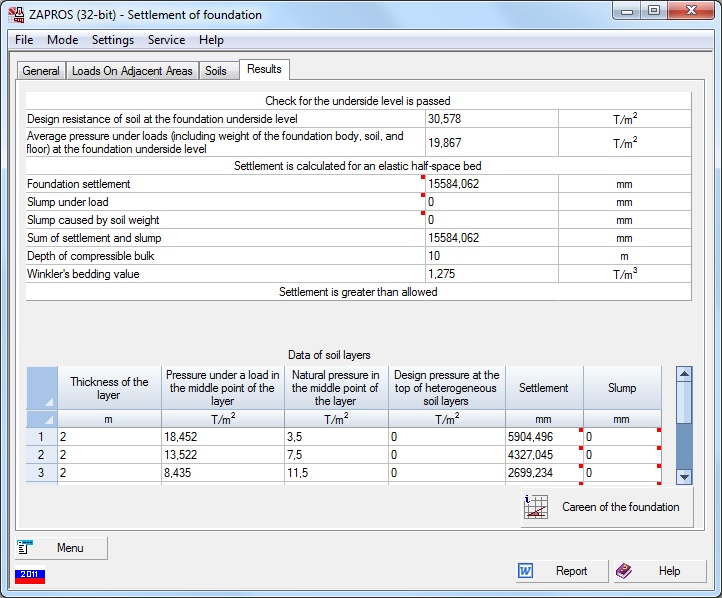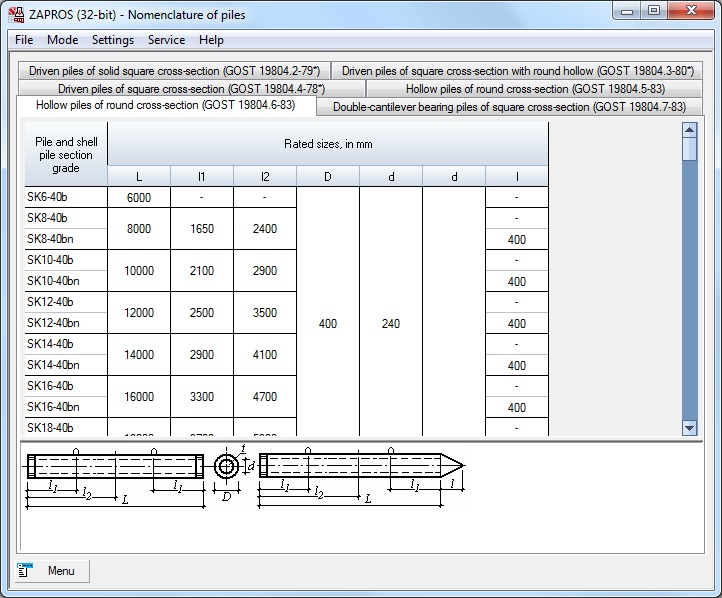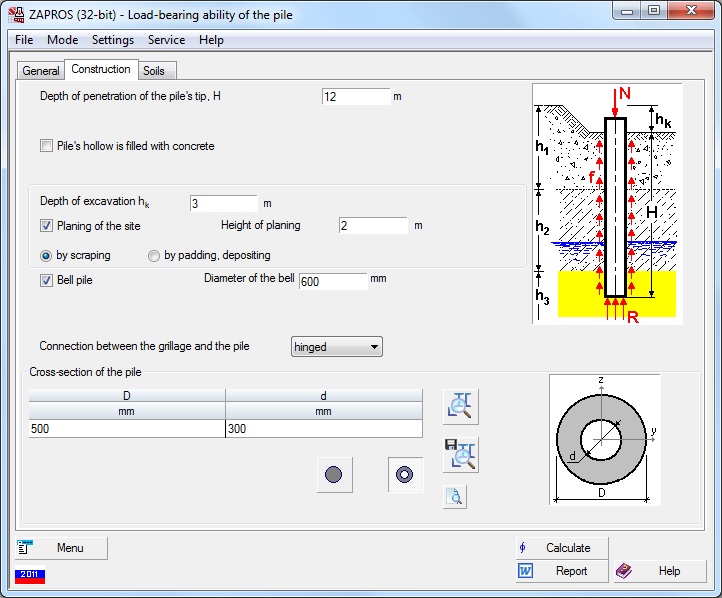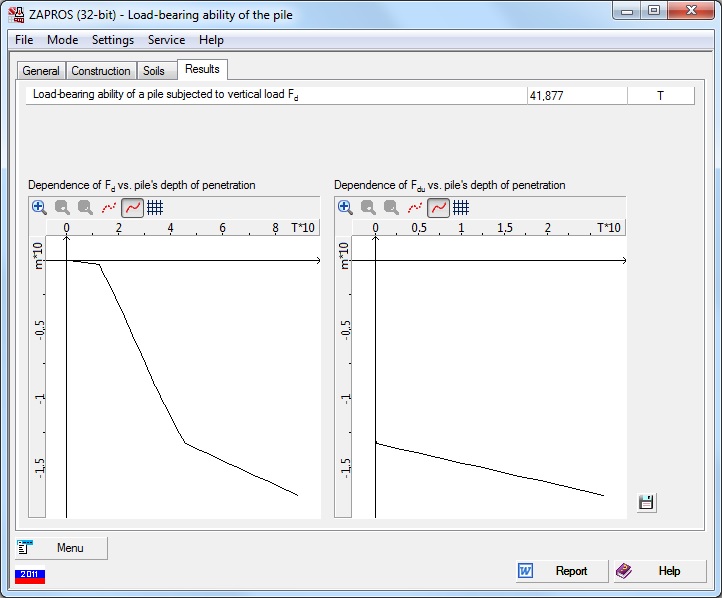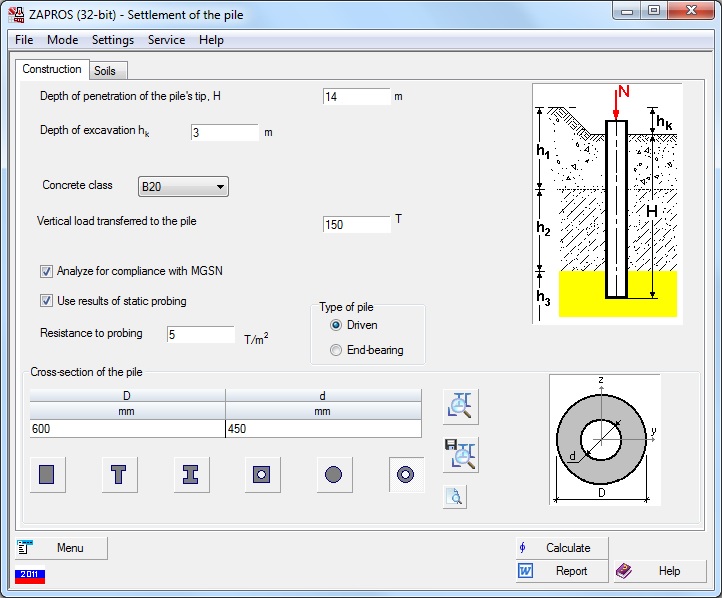Zapros enables you to perform the analysis and check of soil and foundation members according to SNiP 2.02.01-83* and SP 50-101-2004, SNiP 2.02.03-85 and SP 50-102-2003, SP 22.13330 and SP 24.13330, or DBN B.2.1-10-2009, KMK 2.02.01-98 and KMK 2.02.03-98. The application also provides reference information commonly used in geotechnical engineering. The design and reference functions implemented in the application are classified into the following groups: Foundations, Piles, Pile Field Tests, Information.
The modes of the Foundation group enable to perform the following operations: determine the tilt of a rectangular foundation caused by loads acting on it; perform the deformation analysis of subsoil under pad and strip foundations, rectangular in their plane, and rigid slabs; determine the stiffness parameters of the subsoil consisting of a finite number of layers, each layer being linearly deformable and having a constant thickness; calculate the ultimate pressure under the foundation base (design resistance of soil).
The Piles group includes two information modes — Service Factors for Piles and Nomenclature for Piles, together with the following design modes: determination of the load-bearing capacity of a pile subjected to a vertical load; determination of the stability factor of safety of the subsoil, the minimal and maximal bending moment and the shear force in a given section of the pile, and some other pile characteristics; determination of the settlement of a pile subjected to a vertical load.
The Pile Field Tests group includes the calculation of the load-bearing capacity of piles obtained from the dynamic testing; determination of the load-bearing capacity of a driven (production) friction pile subjected to compression, obtained from the soil testing with a sample pile; determination of the load-bearing capacity of a driven (production) friction pile subjected to compression, obtained from the soil testing with a probe pile; determination of the load-bearing capacity of a driven (production) friction pile subjected to compression, obtained from the cone penetration test.
Reference modes enable to browse limit values of the relative difference of settlements, tilt, and an average or maximum settlement for various types of structures; provide information on the design resistance of various kinds of soils given in the codes; the soil properties, given in SNiP, KMK, SP and DBN; and the service factors.
Interface
Zapros functions under Windows operating environment. All the windows, dialog boxes and controls are fully consistent with this environment.
Help (Reference information)
The application is provided with a detailed help which includes descriptions of the user interface and conventions of using the application.
The ZAPROS software application does various kinds of analyses and checks of elements of beds/foundations for compliance with requirements of SNiP 2.02.01-83* and SP 50-101-2004, SNiP 2.02.03-85 and SP 50-102-2003, SP 22.13330.2011 and SP 24.13330.2011, DBN B.2.1-10:2009. The application also provides reference data commonly used in the engineering of beds and foundations.
The first version of the software implements modes for analysis of deformations of rectangular foundations, calculating the inclination of this type of foundations, calculating the subgrade reaction coefficients and the safe working pressure (a design resistance of subgrade soil).
The modes are invoked by their particular buttons and can be either reference (included in the Information group) or analytic (included in the Analysis group).
The reference/information modes include the following:
Deformation limits for foundations - helps browse limit values of the relative difference of settlement, careen, and an average or maximum settlement for various types of structures;
Design resistance of subgrade soil - presents information about the design resistance of various kinds of soils listed in the code;
Soil properties - presents information given by SNiP, SP or DBN;
Service factors - provides information from the Tables of SNiP, SP or DBN.
The Foundations group contains the following actions:
Foundation careen - determines the careen of a rectangular foundation caused by loads upon it;
Foundation settlement - makes a strain analysis of beds of post and strip foundations, rectangular in their plane, and stiff slabs;
Subgrade reaction coefficients - calculates the reaction coefficients of a bed that consists of a finite number of layers, each being linearly deformable and constant in its thickness;
Limit pressure for strain analysis - calculates the limit pressure under the foundation's underside (a design resistance of soil).
The Piles group includes two information modes - Service factors for pile and Range of piles, together with the following analysis modes:
Load-bearing ability of pile - calculates the load-bearing ability of a pile that resists to a vertical load;
Pile analysis - calculates the stability coefficient of the foundation, the minimum and maximum bending moment and the shear force in a given section of the pile, and some other numbers related to the pile;
Pile settlement - calculates the settlement of the pile loaded vertically.
The Pile field tests group consists of:
Dynamic tests of piles - load-bearing ability analysis of piles after results of dynamic tests;
Testing with sample pile - calculation of the load-bearing ability of a driven (field) friction pile that resists to compression, after results of tests of soil with a sample pile;
Testing with probing pile - calculation of the load-bearing ability of a driven (field) friction pile that resists to compression, after results of tests of soil with a probing pile;
Static probing - calculation of the load-bearing ability of a driven (field) friction pile that resists to compression, after results of tests of soil with static probing (penetration test).
Interface
Zapros functions under Windows Vista/7/8/10 operating environment. User dialogue techniques and controls are organized in complete conformance to this environment.
Help (Reference information)
The application is provided with a detailed reference help which includes descriptions of the user interface and conventions of using the application.

